- Home
- Robin Cook
Intervention sam-9 Page 3
Intervention sam-9 Read online
Page 3
He tossed his jacket into an aged leather club chair when he reached the ID office, where all the medical examiners eventually started their day. Stacked on the solitary desk were the records of the cases that had come in during the night and that fell within OCME
jurisdiction, according to the medicolegal investigation team. These cases represented those deaths that had occurred in any unusual or suspicious manner, including suicide, accident, criminal violence, or merely suddenly when the victim was in apparent good health.
Jack sat down at the desk and began going through the cases. He liked to pick out the more challenging ones because they gave him the opportunity to learn. That was what he most enjoyed about forensics. The other medical examiners tolerated this behavior because Jack also did the most cases of anyone.
The normal morning process involved the medical examiner on first call for the week to come in early, usually about seven or slightly before, and go through the cases to determine which ones definitely needed postmortems, then assign them out on an equitable basis. Even Jack had the duty about a dozen times a year, which he never minded since he was invariably there anyway.
Within a couple of minutes Jack found an apparent meningitis case of a teenage boy from a private school on the Upper East Side. Since Jack was generally known as the infectious-disease guru after having made several lucky diagnoses in the past, he read the record slowly and put it aside. He thought that case might be good for him, since many of his colleagues shunned infectious cases. He truly didn’t care.
Jack slowed down on his perusal of the next case as well. It was another relatively young individual, although this time it was a female. The victim was a twenty-seven-year-old woman who’d been brought into an emergency room with supposed rapid onset of confusion, spastic gait, and ultimately coma and death. There had been no fever or malaise, and according to her friends, she was an avid health enthusiast, shunning drugs and alcohol. Although her friends had been enjoying cocktails at the time of her collapse, they claimed the victim had consumed only soft drinks.
“Oh, shit!” a voice lamented, loud enough to snap Jack’s head up.
Standing in the opened doorway leading out into the empty ID room was Vinnie Amendola, one of the mortuary technicians, a newspaper under his arm. He was still holding on to the doorknob of the connecting door as if he might change his mind and flee. It was clear that the source of his outburst was Jack’s presence.
“What’s the matter?” Jack demanded, wondering if there was some emergency.
Vinnie didn’t answer. He glared at Jack for a beat before closing the door behind him.
He stood in front of Jack’s desk, arms crossed. “Don’t freaking tell me you’re reverting to your old ways,” he said.
Jack could not suppress a smile. He’d suddenly realized the cause of Vinnie’s feigned anger. Prior to John Junior’s birth, when Jack would come to work early to cherry-pick the autopsy cases, he’d drag Vinnie down with him to the autopsy room to get a jump on the day. In addition to his regular mortuary-tech duties, Vinnie was responsible for coming in early to facilitate the transition from whatever the night techs were doing, although what he mostly did was make the communal coffee and then read the sports section of the Daily News.
Although Vinnie always complained about having to start autopsies earlier than the chief medical examiner decreed, he and Jack were a great team despite their merciless teasing of each other. Together they could frequently do one and a half or even two cases while others did just one.
“I’m afraid so, sport,” Jack said. “Vacation is over. You and I are going to get back down to work. It’s my New Year’s resolution.”
“But it’s not New Year’s for another month,” Vinnie complained.
“Tough,” Jack responded. He reached out and pushed the chart of the twenty-seven-year-old woman in Vinnie’s direction. “Let’s start with Keara Abelard.”
“Not so fast, supersleuth,” Vinnie protested, using his old nickname for Jack. He made a production of inspecting his watch as if he were about to refuse Jack’s order. “I might be able to accommodate you in, say, ten minutes, after I make the house coffee.” He smiled.
Feigning the opposite, he’d actually missed his special relationship with Jack based on their early starts.
“It’s a deal,” Jack said. After a quick high-five with Vinnie, he went back to the stack of charts.
“Since you stopped coming in early when your son was born, I thought it was a permanent schedule change,” Vinnie said as he loaded the pot with fresh coffee, whose aroma quickly permeated the room.
“It was just a temporary slowdown,” Jack said. Although most everyone at the OCME
knew about his child’s birth, no one, as far as Jack knew, was aware of the infant’s illness. Jack and Laurie were both intensely private people.
“How do you know Dr. Besserman won’t want this Keara Abelard for himself?”
“Is that the ME who’s on this week and supposed to be here already?”
“None other,” Vinnie said.
“I don’t think he’ll be too upset,” Jack said, with his usual sarcasm. He knew full well that Besserman, one of the most senior MEs, would just as soon pass on all autopsies at this stage of his career. Nonetheless, Jack scribbled a quick note to Arnold, telling him he’d taken the Abelard case but would be happy to do another couple of cases if need be.
He put the Post-it on top of the pile of records and scraped his chair back.
In less than twenty minutes Jack and Vinnie were down in the autopsy room, which had been renovated to a degree during the previous year. Gone were the old soapstone sinks.
In their place were modern composite ones. Gone also were the giant glass-fronted cabinets with the collections of medieval-appearing autopsy tools. In their place were nondescript Formica ensembles with solid doors and significantly more space.
“Let’s do it!” Jack said. While he’d filled out the initial paperwork, not only had Vinnie gotten the body on the table and the X-rays on the view box, he’d also gotten all the supplies laid out, including the instruments he thought Jack was likely to want: specimen bottles, preservatives, labels, syringes, and evidence custody tags, in case Jack happened to detect an element of criminality.
“So, what are you looking for?” Vinnie asked, as Jack went through his exhaustive external examination. He ranged over the whole body but devoted particular attention to the head.
“Signs of trauma, for one thing,” Jack said. “That would be my number-one guess at this point. Of course, it could have been an aneurysm as well. She apparently became quickly disoriented and spastic, which led to coma and death.” Jack glanced into both external ear canals. He then used an ophthalmoscope to look at eye grounds. “Reputedly, she’d been out having cocktails with friends—nonalcoholic, according to history, and no drugs.”
“Could she have been poisoned?”
Jack straightened up and looked across the body at Vinnie. “That’s a strange suggestion at this point. What made you think of that?”
“There was a poisoning on a TV show last night.”
Jack laughed behind his mask. “That’s an interesting source for differential diagnosis.
I’m guessing that’s not too likely, but we’ll still need to do a toxicology screen. We’ll also make sure she’s not pregnant.”
“Good point about the pregnancy idea. That was what happened in the show last night.
The boyfriend wanted to get rid of the baby and the mom at the same time.” Jack didn’t respond. Instead, he began carrying out a painstaking examination of Keara’s scalp. Her thick, shoulder-length hair made progress slow.
“There’s no way this case could be infectious, could it?” Vinnie asked. He had never liked germs. In fact, he hated them. Whether involving bacteria, viruses, or “anything in between,” as he called some of the other infectious agents, he’d typically avoided contact as best he could, at least until Jack arrived. Since then
, because of the number of infectious cases Jack had done, he’d become inured to his phobia. That morning he and Jack were wearing only Tyvek suits, regular medical masks, surgeon’s caps, and curved plastic face guards over their clothes. For a few years the front office had dictated full barrier protection on all cases with what were called “moon suits,” but that was no longer the situation, and now each medical examiner could wear whatever he or she wanted provided it was appropriate. Same held for the mortuary techs.
“There’s even less chance of it being infectious than it being poisoning,” Jack said.
Finishing with the head, Jack carefully examined the neck. When that was completed, he was reasonably certain there was no sign of trauma, as the external exam had been entirely normal. Jack had no more idea of what killed the young woman than he had when they’d started, and feeling less patient than usual, he was briefly and irrationally irritated at the patient for withholding her secrets.
After taking ocular fluid, urine, and blood for toxicology and checking out the X-rays on the chance they might provide a clue about the cause of death, Jack started the internal part of the autopsy. He used the typical Y-shaped incision from the points of the shoulders down to the pubis, then, with Vinnie’s help, removed the organs and examined each in turn.
“While you rinse out the intestine, I’m going to make sure there was no venous thrombosis in the deep leg veins,” Jack said, wanting to cover all the bases. Increasingly curious about the cause of death, he was now all business and trying to think out of the box. There was none of his signature black humor or teasing of Vinnie.
By the time Vinnie returned with the clean intestine, Jack was able to inform him that in addition to the other negatives there’d been no clotting problems with possible emboli to the brain. The cause of death of Keara Abelard was still a total mystery, whereas with most cases at that point there would have been a good idea.
After the abdominal and chest portions of the postmortem were completed, Jack returned his interest to the patient’s head. “This has got to be pay dirt!” he said, as he stepped back to give Vinnie room to use the bone saw to cut off the skullcap.
While Vinnie was busy sawing, several of the other day mortuary techs appeared and prepared to assist their assigned medical examiners. Jack didn’t even notice them. As Vinnie continued cutting with the noisy bone saw, Jack began to feel uncomfortable.
With no theories as to the cause of death other than a burst aneurysm, which he doubted, he had the sense he was missing something, something important, perhaps even making a mistake.
The moment Vinnie put the calvarium aside and then freed up and lifted out the glistening, furrowed brain, Jack leaned forward and his heart skipped a beat. There was dark blood in the posterior fossa at the very back of the head, and enough such that it was spilling out onto the stainless-steel autopsy table.
“Damn!” Jack snapped with obvious regret while pounding his gloved hand on the corner of the table.
“What’s the matter?” Vinnie asked.
“I made a mistake!” Jack said angrily.
Taking a step down alongside the body, Jack peered into the depths of the chest cavity and up toward the head, lifting the anterior wall of the chest. “We’ve got to do an arteriogram X-ray of the vasculature to the brain,” Jack said out loud, more to himself than to Vinnie. He was clearly disappointed with himself.
“You know I can’t put the brain back,” Vinnie said hesitantly, worried that Jack was blaming him for something.
“Of course I know that,” Jack said. “We can’t reverse what we’ve already done. I’m talking about an arteriogram of the vasculature leading to the brain, not of the brain itself. Just get some contrast dye and a big syringe!” 4
2:36 P.M., MONDAY, DECEMBER 1, 2008
CAIRO, EGYPT
(7:36 A.M. NEW YORK CITY)
Through the shimmering heat, Sana Daughtry could see the Four Seasons Hotel from the taxi as it threaded through traffic. Staying there had been Shawn’s idea. Sana was supposed to have stayed at the Semiramis Intercontinental, where her conference was being held. In addition to being one of the principal speakers, she’d also been required to serve on multiple panels, and accordingly needed to be there all four days. It would have been far more convenient for her to have been at the Semiramis, to have had the option of occasionally popping up to her room.
Once Shawn had decided to go along on the trip, he had taken over the travel decision-making. It had been his choice to take the hotel credit from the Semiramis and apply it to a room at the newer and much more posh Four Seasons. When Sana had complained about the unnecessary extra cost, Shawn had informed her that he’d found an archaeology meeting for himself, making the extra cost a tax deduction. At that point Sana hadn’t argued. There was no point.
With the driver paid, Sana slipped from the cab. She was glad to get away. The driver had peppered her with questions. Sana was a private person, unlike her husband, who could strike up conversations with just about anyone. From Sana’s perspective, he had little sense as to what should be private and what should be available for public consumption. There had even been a few occasions when it seemed that Shawn was making an effort to impress strangers, particularly female strangers, with information about their expensive New York City lifestyle that included their living in one of the few remaining wood frame, clapboard houses in New York City’s West Village. Why he would want to brag about such a thing she had no idea, although she assumed, psychologically speaking, that it had to reflect some insecurity.
The doorman greeted Sana welcomingly as she passed into the hotel’s lobby. She expected to find Shawn out at the pool, since he was far less concerned than she about actually attending his conference. Over the last few days he’d struck up poolside conversations with one or two women, who would now know more about their life than Sana would have preferred. But she was determined not to allow it to get to her as it had in the past. More than once she’d considered that maybe she was the exception, not Shawn; maybe she was just a private prude and should ease up.
A youngish, elegantly dressed gentleman managed to board the elevator just as the doors were closing. He’d obviously had to run the last few steps and was breathing deeply. He looked at Sana and smiled. Sana looked up at the floor indicator. The man was in a Western suit, complete with a billowing pocket square. Like Shawn, he had a distinctly international air, but he was a much younger, more attractive version.
“Terrific day, isn’t it!” the man proclaimed with an obvious American accent. Unlike Shawn, he apparently didn’t feel the need to affect an English accent when talking with strangers.
If there’d been anyone else in the car, Sana would have assumed he was talking to them.
She met his gaze, guessing he was close to her age of twenty-eight. Judging by his attire, he was presumably rather successful financially.
“It’s a beautiful day,” Sana agreed in a tone that didn’t encourage conversation. She returned her attention to the floor indicator. Her fellow passenger had glanced at the buttons but had not pressed a floor number. Was he staying on her floor, Sana silently asked herself, and if not, should she be concerned? A second later she chided herself; maybe she really was a prude.
“Are you from New York?” the man asked.
“I am,” Sana said, realizing that if her husband were in the elevator and a woman was asking the questions, he would have launched into a mini-biography of how he’d grown up in Columbus, Ohio, gotten full scholarships to Amherst undergrad and Harvard grad, and then moved up the Met’s hierarchy to run the show in Near Eastern art, all in the time it took to reach the eighth floor.
“Have a nice day,” the man said, as Sana exited onto the corridor’s plush carpet. He didn’t leave the car. As she proceeded toward her room she questioned her paranoia, wondering if she’d been living in New York too long. Had Shawn been in the elevator with a woman, they might have very well ended up on their way to one of the hotel’s
many bars for a drink.
Sana came to a halt. Shawn’s easy sociability was suddenly irritating. Why? Why now?
Her best guess was because it was a new behavior, and now that her anxiety about her conference was over, she could think about more personal issues. In the past Shawn had always been admirably and sincerely thoughtful about her level of moment-to-moment contentment, especially during their torrid, six-month courtship. Over the last year or so and certainly on this present trip, that hadn’t been the case. When she’d first met Shawn at a New York gallery opening almost four years ago, she was defending her Ph.D. thesis on mitochondrial DNA, and had been bowled over by his affection and attention. She’d also been bowled over by his erudition: He was fluent in more than a half-dozen exotic Near Eastern languages and knew things about art and history that she only wished she knew. The breadth of his knowledge made her seem like the stereotypical narrow-minded scientist by comparison.
Recommencing walking but at a much slower pace, Sana wondered whether her mother had been right. Perhaps the twenty-six-year age difference between them was too great.
At the same time, she distinctly remembered the difficulty she’d had dealing with the juvenile nature of men her own age, who wore their baseball caps backward and acted like perfect asses. Unlike most of her girlfriends, she’d never been interested in having children. Early on she recognized herself as an academic and, in that sense, much too selfish. For her, Shawn’s two sets of children, from his first and third marriages, were enough to satisfy what meager maternal instincts she possessed.

 Shock
Shock Mutation
Mutation Chromosome 6
Chromosome 6 Brain
Brain Intervention
Intervention Invasion
Invasion The Legend of Parzival: The Epic Story of His Quest for the Grail
The Legend of Parzival: The Epic Story of His Quest for the Grail Acceptable Risk
Acceptable Risk Cell
Cell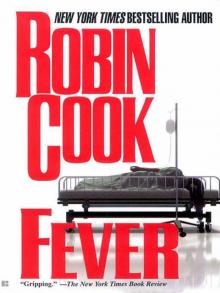 Fever
Fever Death Benefit
Death Benefit Contagion
Contagion Mindbend
Mindbend Coma
Coma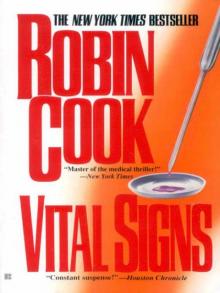 Vital Signs
Vital Signs Harmful Intent
Harmful Intent Critical
Critical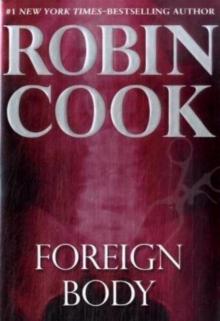 Foreign Body
Foreign Body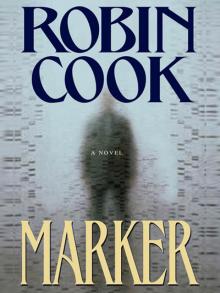 Marker
Marker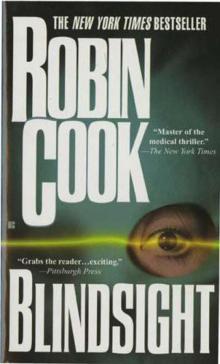 Blindsight
Blindsight Terminal
Terminal Sphinx
Sphinx Fatal Cure
Fatal Cure Host
Host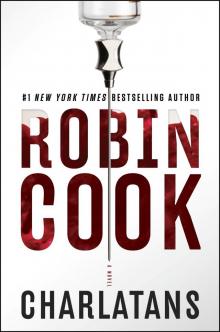 Charlatans
Charlatans Crisis
Crisis Vector
Vector Toxin
Toxin Abduction
Abduction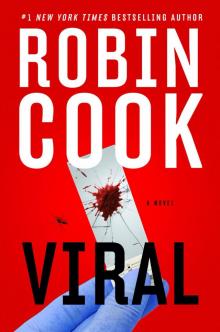 Viral
Viral Pandemic
Pandemic Outbreak
Outbreak Vector js&lm-4
Vector js&lm-4 Godplayer
Godplayer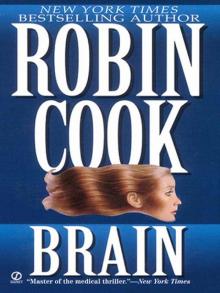 A Brain
A Brain Year of the Intern
Year of the Intern Outbreak dmb-1
Outbreak dmb-1 Cure
Cure Mortal Fear
Mortal Fear The Legend of Parzival
The Legend of Parzival Vital Signs dmb-2
Vital Signs dmb-2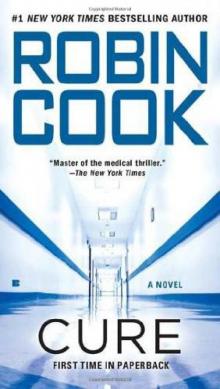 Cure (2010) sam-10
Cure (2010) sam-10 Blindsight sam-1
Blindsight sam-1 The Year of the Intern
The Year of the Intern Intervention sam-9
Intervention sam-9 Foreign Body sam-8
Foreign Body sam-8